3D városmodellek feldolgozása Pythonnal¶
Dukai Balázs @BalazsDukai, FOSS4G-HU 2019
Tweet #CityJSON
3D geoinformation research group, TU Delft, Netherlands
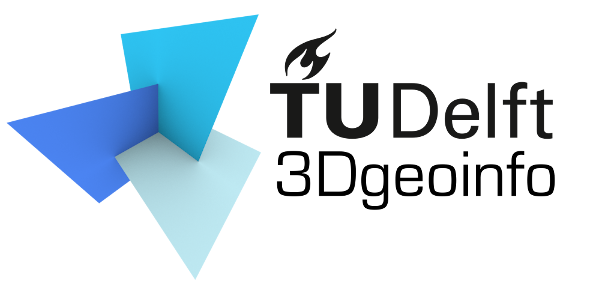
Az előadás anyagai megtalálhatóak itt: https://github.com/balazsdukai/foss4g2019
3D + város + modell ?¶
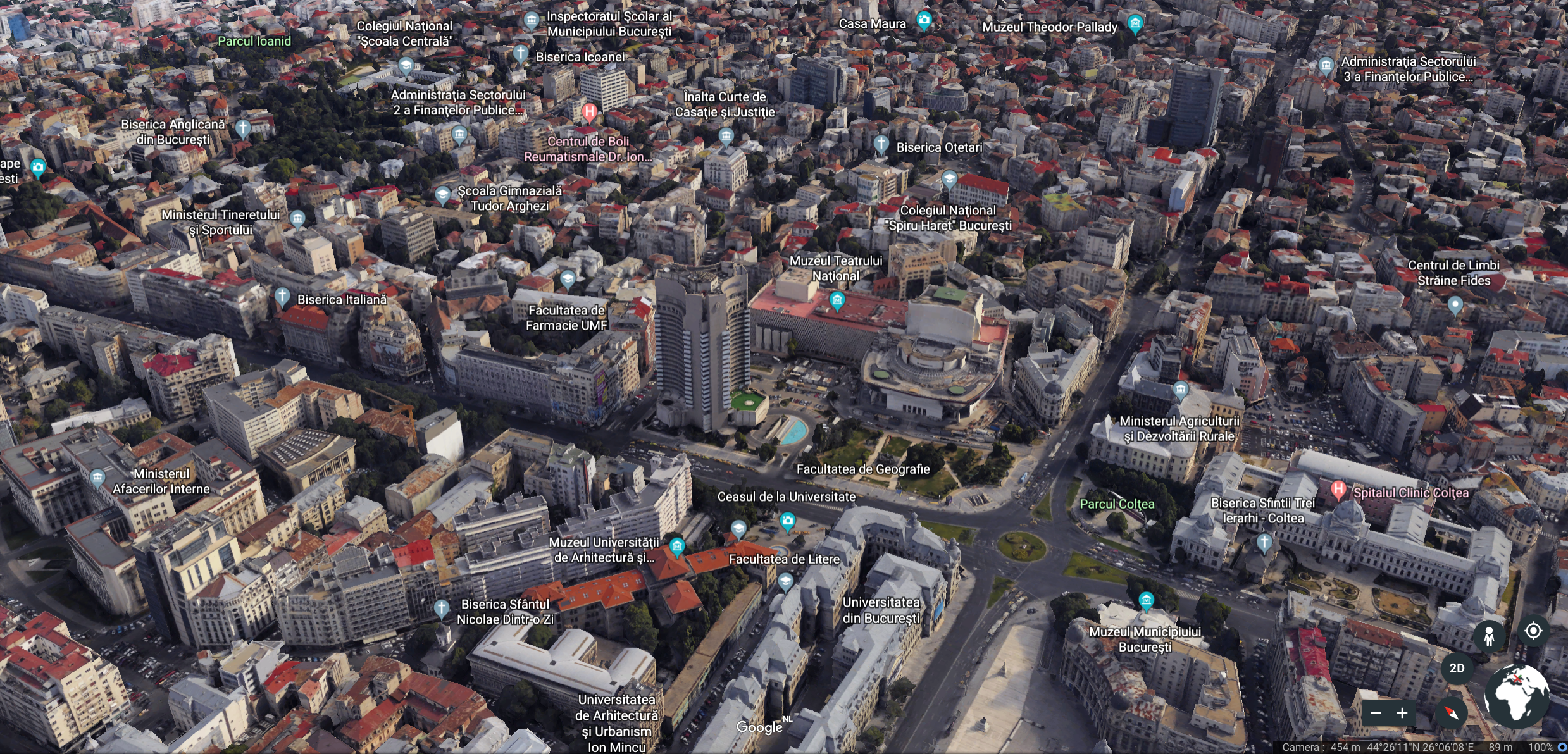
Szemantikus modellek¶
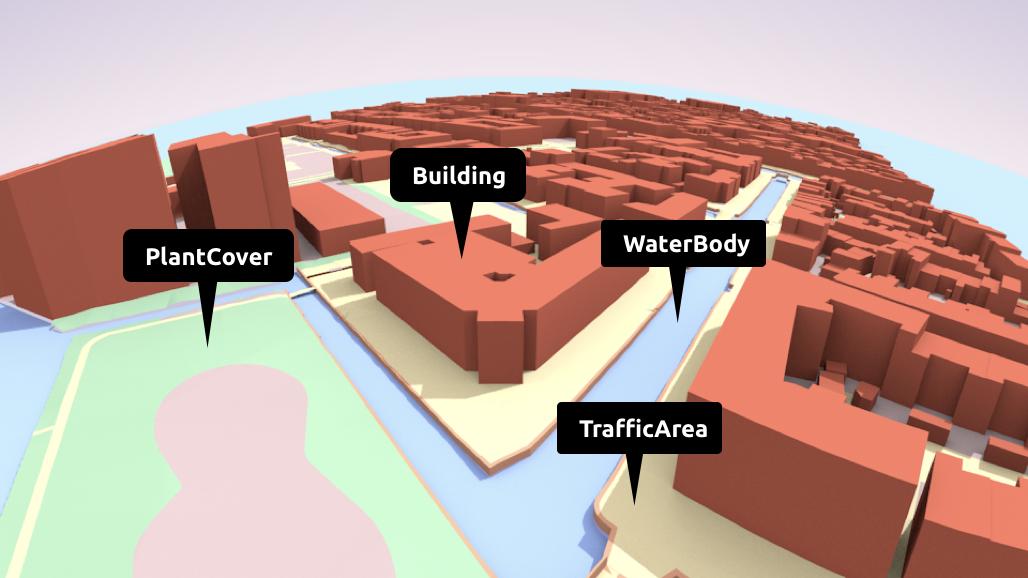
Hasznosak elemzések elvégzésére¶
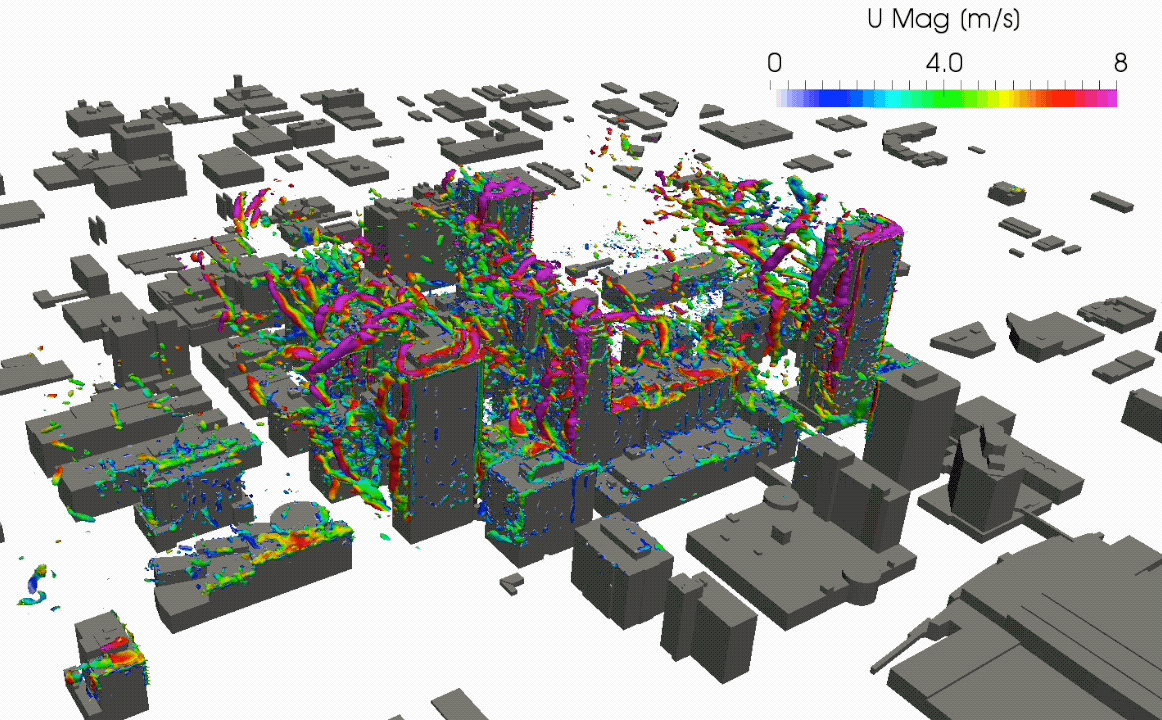
García-Sánchez, C., van Beeck, J., Gorlé, C., Predictive Large Eddy Simulations for Urban Flows: Challenges and Opportunities, Building and Environment, 139, 146-156, 2018.
tobb területen...¶
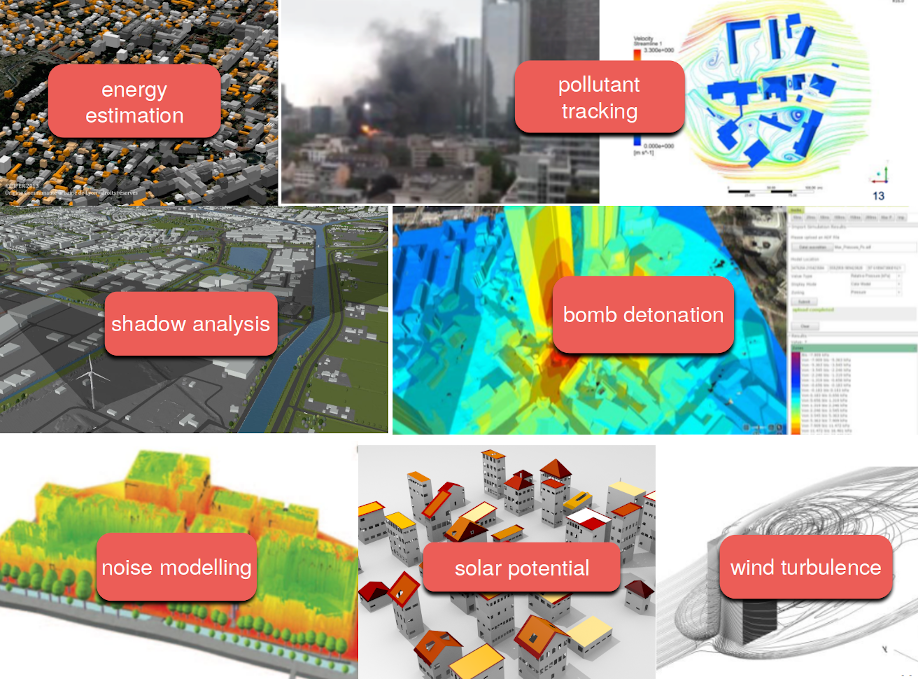
...viszont a hangsúly az előállításon áll¶
számos modell elérhető, de ki használja ezeket? A vizualizáción kívül bármi másra?
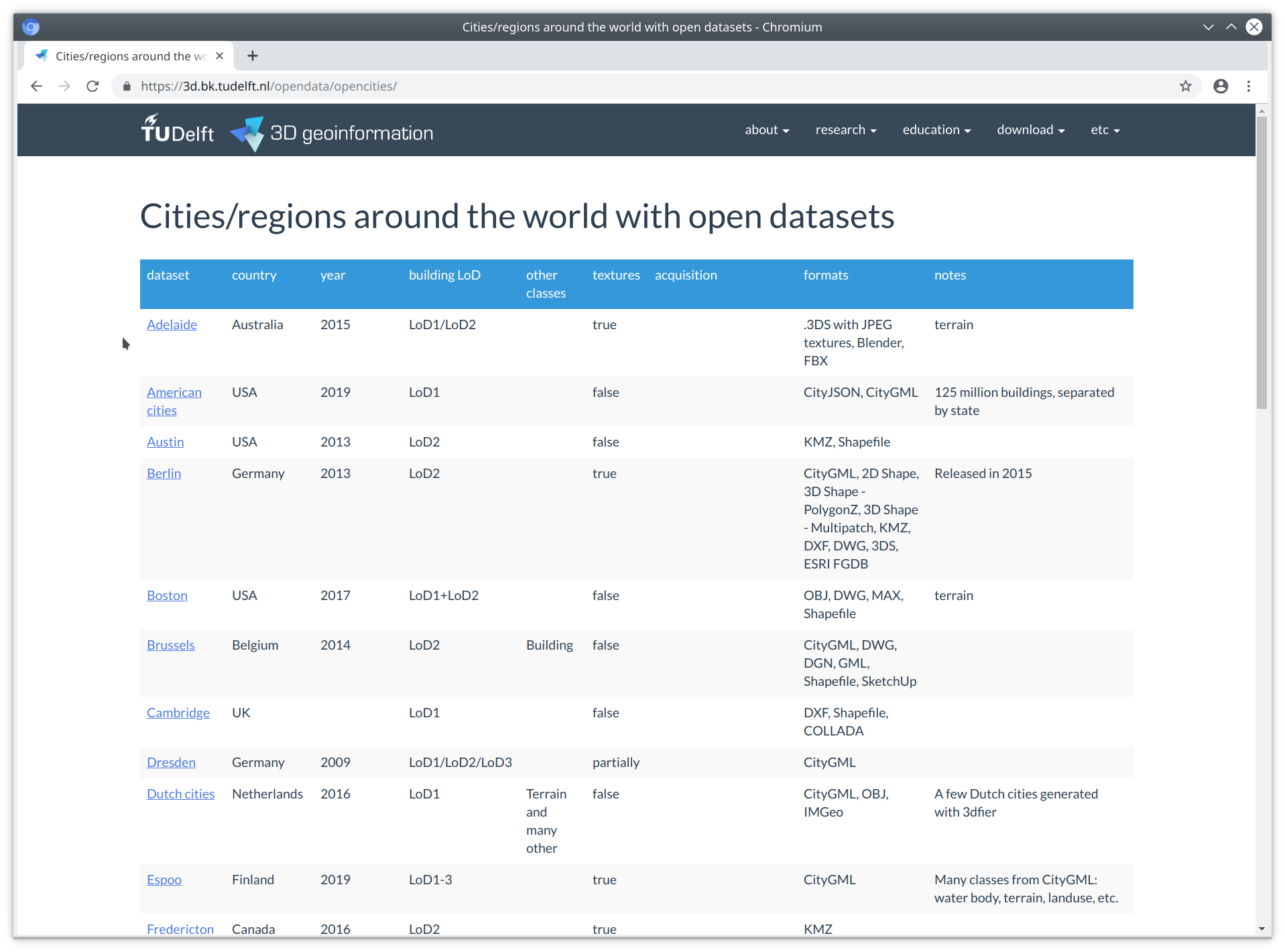
Viszont a 3D városmodellekkel dolgozni nehéz¶
Az épített környezetünk összetett, és az azt alkotó elemek is összetettek¶

A szoftvertámogatás hiányos¶
kevés alkalmazás támogatja a 3D városmodelleket
ha igen, akkor általában zárt adatmodell és formátum (Esri, FME, Bentley ...)
kevés eszköz áll az egyéni felhasználó rendelkezésére
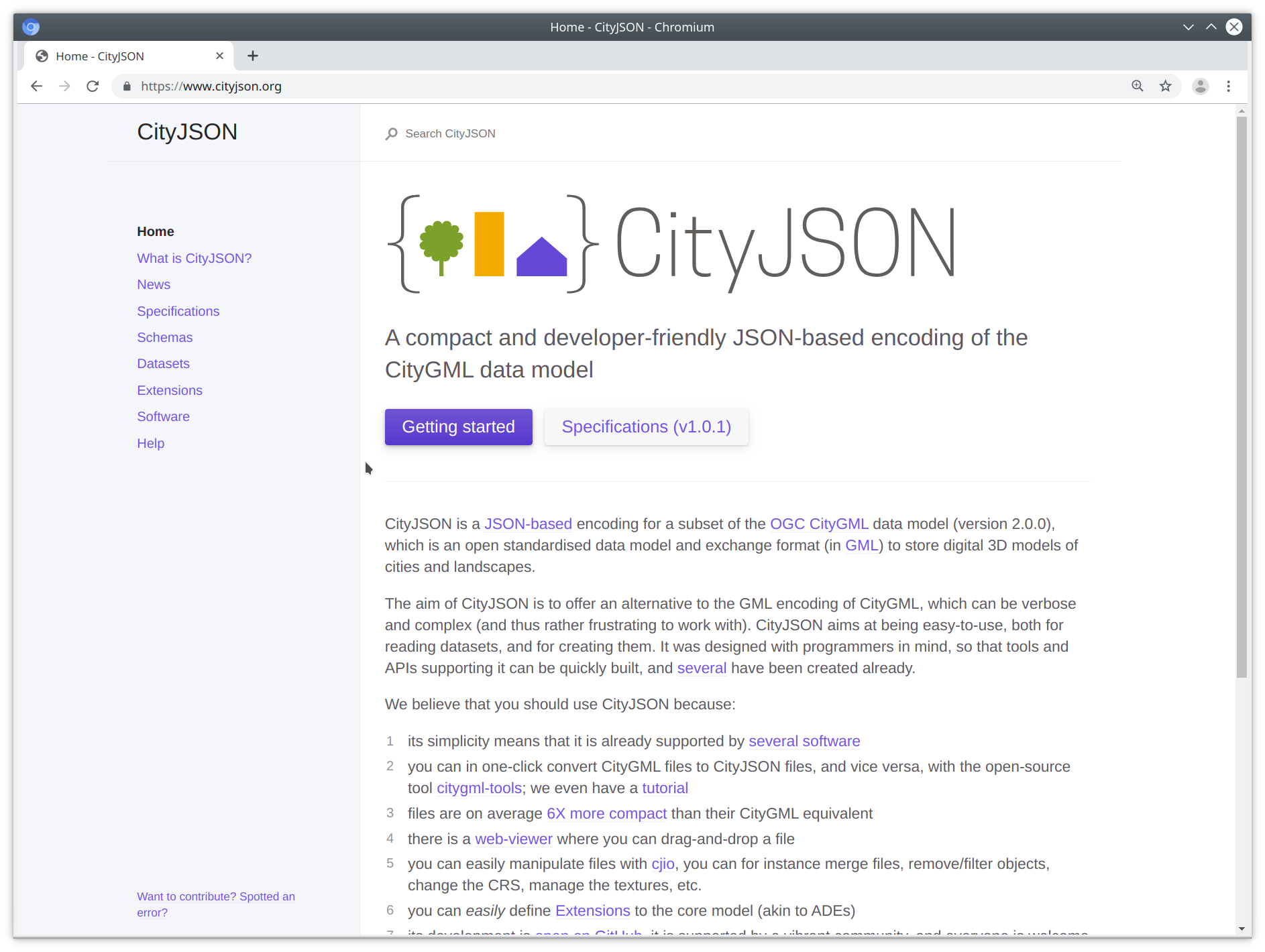
A CityJSON sarokkövei¶
- egyszerű, tehát egyszerűen programozható
- teljesen nyílt
- lapos objektum hierarchia
- a szoftveres alkalmazás elsődleges
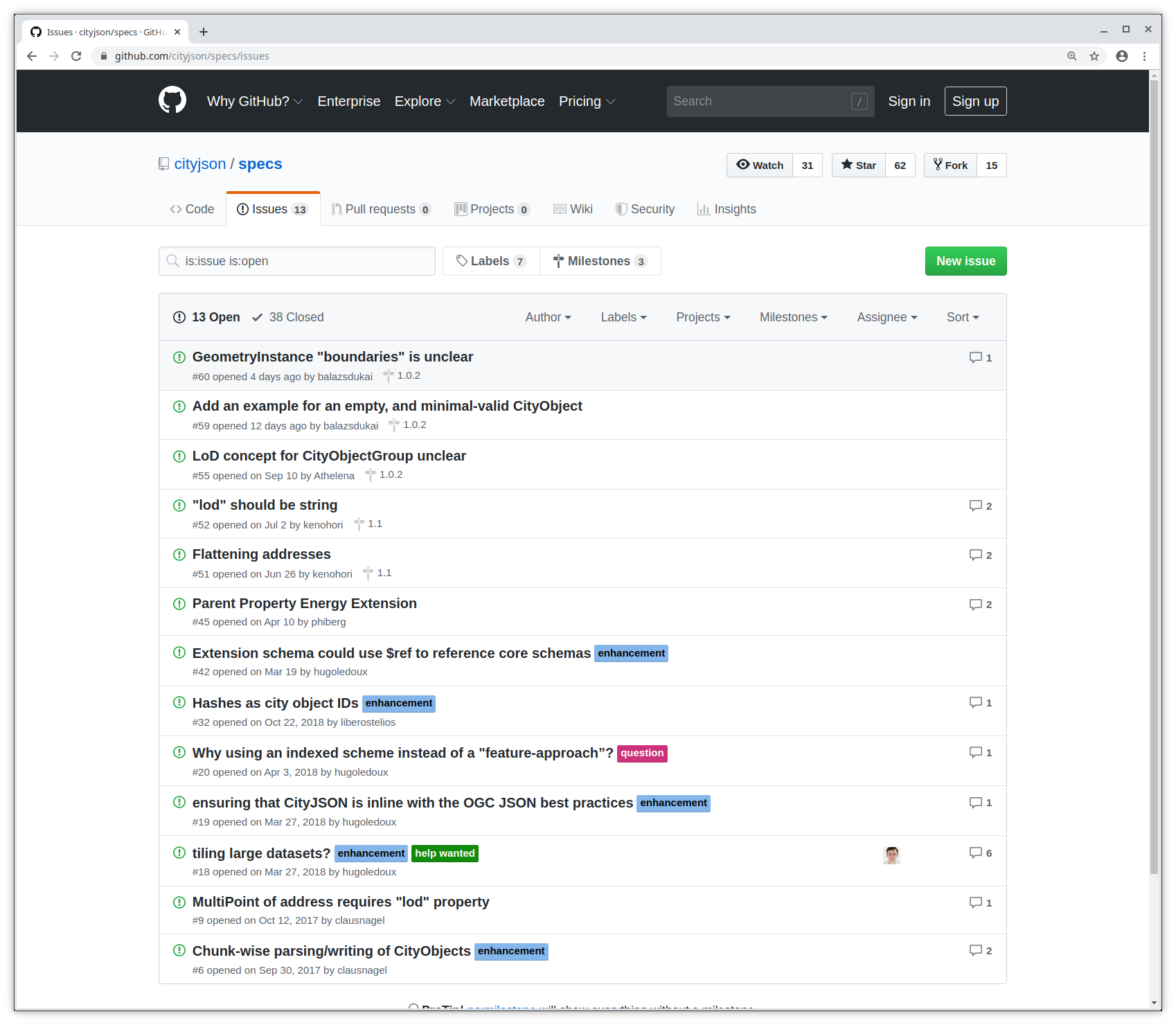
A CityGML JSON-alapú kódolása¶

~6x tömörítés a CityGML-hez képest¶
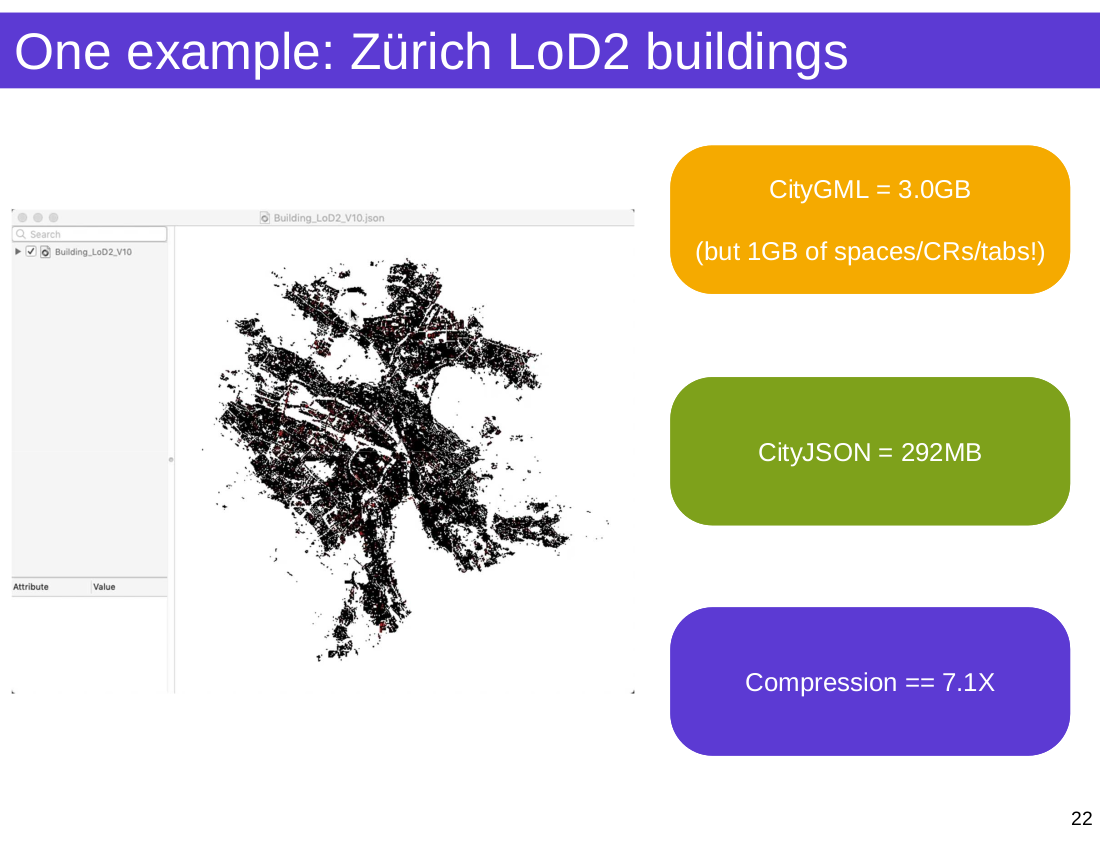
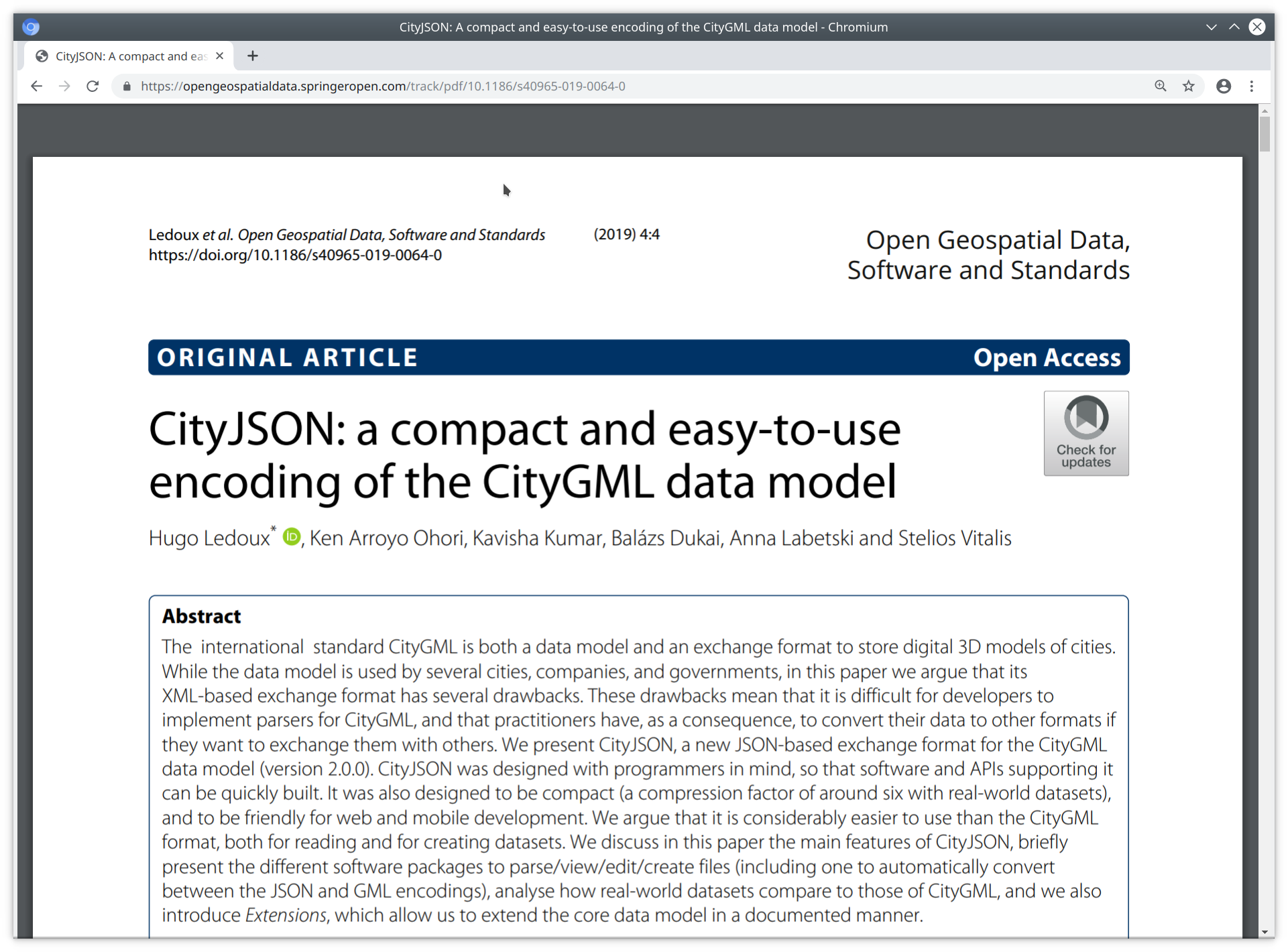
Most pedig nézzünk a dolgok mélyére...¶

Egy üres CityJSON fájl¶
Egy CityObject¶
Geometria¶
- boundaries : a geometria definíció a pontlistára mutat (inspiráció: Wavefront OBJ)
- Pontlista a dokumentum gyökerén
- A pontok nem ismétlődnek (a Simple Features-el ellentétben)
- semantics : a 'boundary' felületekre mutat
import json
import os
path = os.path.join('data', 'rotterdam_subset.json')
with open(path) as fin:
cm = json.loads(fin.read())
print(f"There are {len(cm['CityObjects'])} CityObjects")
# list all IDs
for id in cm['CityObjects']:
print(id, "\t")
There are 16 CityObjects
{C9D4A5CF-094A-47DA-97E4-4A3BFD75D3AE}
{71B60053-BC28-404D-BAB9-8A642AAC0CF4}
{6271F75F-E8D8-4EE4-AC46-9DB02771A031}
{DE77E78F-B110-43D2-A55C-8B61911192DE}
{19935DFC-F7B3-4D6E-92DD-C48EE1D1519A}
{953BC999-2F92-4B38-95CF-218F7E05AFA9}
{8D716FDE-18DD-4FB5-AB06-9D207377240E}
{C6AAF95B-8C09-4130-AB4D-6777A2A18A2E}
{72390BDE-903C-4C8C-8A3F-2DF5647CD9B4}
{8244B286-63E2-436E-9D4E-169B8ACFE9D0}
{87316D28-7574-4763-B9CE-BF6A2DF8092C}
{CD98680D-A8DD-4106-A18E-15EE2A908D75}
{64A9018E-4F56-47CD-941F-43F6F0C4285B}
{459F183A-D0C2-4F8A-8B5F-C498EFDE366D}
{237D41CC-991E-4308-8986-42ABFB4F7431}
{23D8CA22-0C82-4453-A11E-B3F2B3116DB4}
A CityJSON fájlok csak egyszerű JSON fájlok. Nem kell más mint a Standard Library
Viszont mindent meg kell írni az alapoktól kezdve

(Meglehetősen) stabil CLI¶
$ cjio city_model.json reproject 2056 export --format glb /out/model.glb
és egy kísérleti API¶
from cjio import cityjson
cm = cityjson.load('city_model.json')
cm.get_cityobjects(type='building')
pip install cjio
pip install git+https://github.com/tudelft3d/cjio@develop
cjio's CLI¶
! cjio --help
Usage: cjio [OPTIONS] INPUT COMMAND1 [ARGS]... [COMMAND2 [ARGS]...]...
Process and manipulate a CityJSON file, and allow different outputs. The
different operators can be chained to perform several processing in one
step, the CityJSON model goes through the different operators.
To get help on specific command, eg for 'validate':
cjio validate --help
Usage examples:
cjio example.json info validate
cjio example.json assign_epsg 7145 remove_textures export output.obj
cjio example.json subset --id house12 save out.json
Options:
--version Show the version and exit.
--ignore_duplicate_keys Load a CityJSON file even if some City Objects have
the same IDs (technically invalid file)
--help Show this message and exit.
Commands:
assign_epsg Assign a (new) EPSG.
clean Clean = remove_duplicate_vertices +...
compress Compress a CityJSON file, ie stores its...
decompress Decompress a CityJSON file, ie remove the...
export Export the CityJSON to another format.
extract_lod Extract only one LoD for a dataset.
info Output info in simple JSON.
locate_textures Output the location of the texture files.
merge Merge the current CityJSON with others.
partition Partition the city model into tiles.
remove_duplicate_vertices Remove duplicate vertices a CityJSON file.
remove_materials Remove all materials from a CityJSON file.
remove_orphan_vertices Remove orphan vertices a CityJSON file.
remove_textures Remove all textures from a CityJSON file.
reproject Reproject the CityJSON to a new EPSG.
save Save the city model to a CityJSON file.
subset Create a subset of a CityJSON file.
translate Translate the file by its (-minx, -miny,...
update_bbox Update the bbox of a CityJSON file.
update_textures Update the location of the texture files.
upgrade_version Upgrade the CityJSON to the latest version.
validate Validate the CityJSON file: (1) against its...
! cjio data/rotterdam_subset.json info
Parsing data/rotterdam_subset.json
{
"cityjson_version": "1.0",
"epsg": 7415,
"bbox": [
90454.18900000001,
435614.88,
0.0,
91002.41900000001,
436048.217,
18.29
],
"transform/compressed": true,
"cityobjects_total": 16,
"cityobjects_present": [
"Building"
],
"materials": false,
"textures": true
}
! cjio data/rotterdam_subset.json \
subset --exclude --id "{CD98680D-A8DD-4106-A18E-15EE2A908D75}" \
merge data/rotterdam_one.json \
reproject 2056 \
save data/test_rotterdam.json
Parsing data/rotterdam_subset.json Subset of CityJSON Merging files Reproject to EPSG:2056 [####################################] 100% Saving CityJSON to a file /home/balazs/Reports/talk_cjio_foss4g_2019/data/test_rotterdam.json
A CLI volt először, nem voltak tervek az API-ra
A városmodell egészén működik, nincs lehetőség az objektumokat külön feldolgozni
cjio's API¶
Cél hogy lehetővé tegye az olvas --> elemez --> módosít --> ír iterációt az adatelemzés folyamán
Az objektumokon (CityObject) és azok részein működik
Függvények a leggyakoribb lépésekre
Inspiráció: tidyverse az R programozási nyelvből
CityJSON beolvasása¶
path = os.path.join('data', 'rotterdam_subset.json')
cm = cityjson.load(path)
print(type(cm))
<class 'cjio.cityjson.CityJSON'>
Objektumok kiválasztása¶
CityObject kiválasztása típus szerint vagy azonosító szerint.
Note that get_cityobjects() == cm.cityobjects
buildings = cm.get_cityobjects(type='building')
# both Building and BuildingPart objects
buildings_parts = cm.get_cityobjects(type=['building', 'buildingpart'])
r_ids = ['{C9D4A5CF-094A-47DA-97E4-4A3BFD75D3AE}',
'{6271F75F-E8D8-4EE4-AC46-9DB02771A031}']
buildings_ids = cm.get_cityobjects(id=r_ids)
Városmodellek elemzése¶
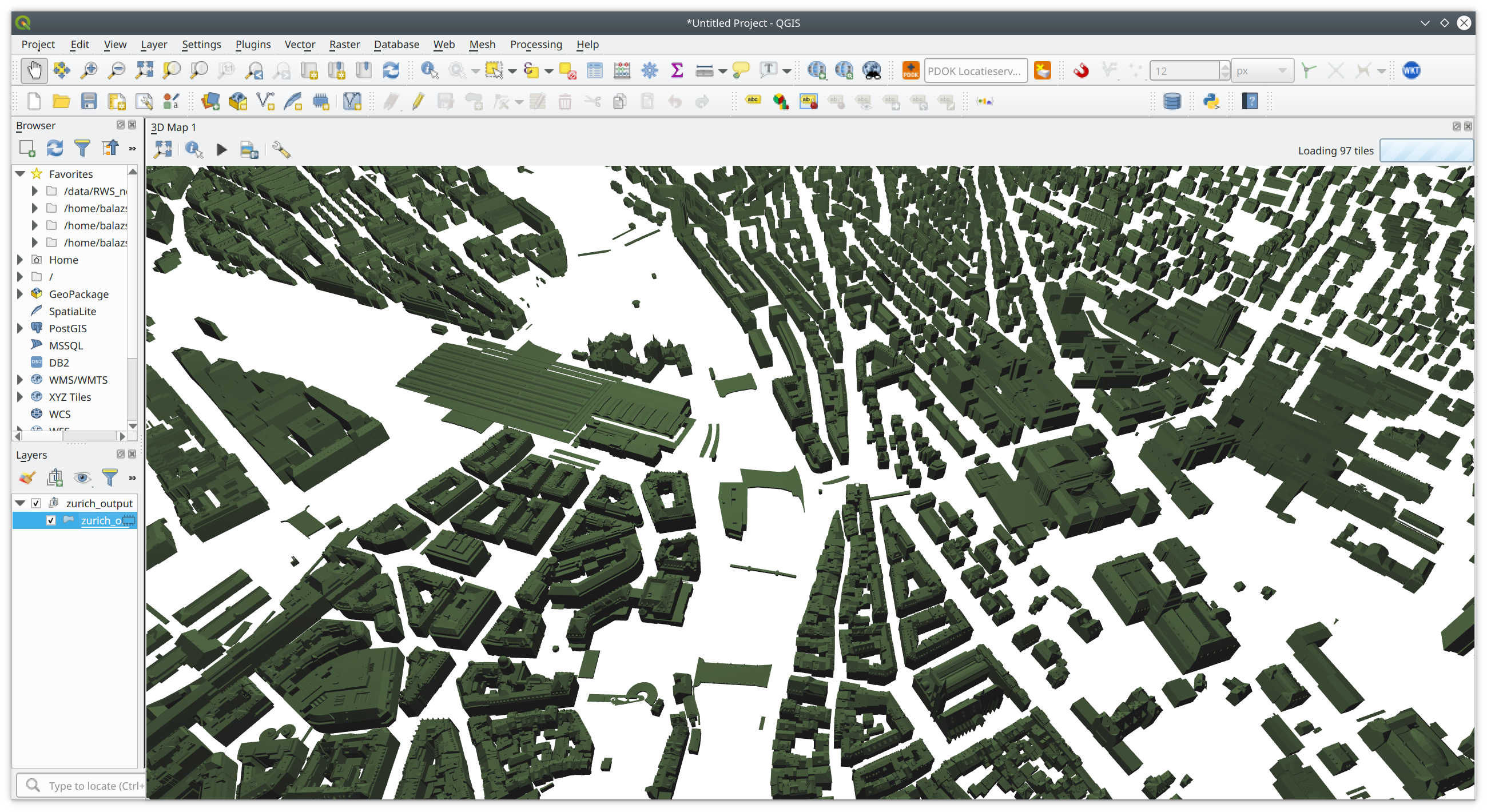
path = os.path.join('data', 'zurich.json')
zurich = cityjson.load(path, transform=True)
Egy függvény...¶
def compute_footprint_area(co):
"""Compute the area of the footprint"""
footprint_area = 0
for geom in co.geometry:
# only LoD2 (or higher) objects have semantic surfaces
if geom.lod >= 2.0:
footprints = geom.get_surfaces(type='groundsurface')
# there can be many surfaces with label 'groundsurface'
for i,f in footprints.items():
for multisurface in geom.get_surface_boundaries(f):
for surface in multisurface:
# cast to Shapely polygon
shapely_poly = Polygon(surface)
footprint_area += shapely_poly.area
return footprint_area
Számoljunk új tulajdonságokat¶
for co_id, co in zurich.cityobjects.items():
co.attributes['nr_vertices'] = len(co.get_vertices())
co.attributes['fp_area'] = compute_footprint_area(co)
zurich.cityobjects[co_id] = co
df = zurich.to_dataframe()
df.head()
| creationDate | Geomtype | nr_vertices | fp_area | class | Herkunft | QualitaetStatus | FileCreationDate | Region | GebaeudeStatus | |
|---|---|---|---|---|---|---|---|---|---|---|
| UUID_93fc5bae-4446-4336-9ff8-6679ebfdfde3 | 2017-01-23 | 1.0 | 24 | 65.209763 | NaN | NaN | NaN | NaN | NaN | NaN |
| UUID_c9884c4e-1cac-47f5-b88b-6fb074c0ae50 | 2017-01-23 | NaN | 0 | 0.000000 | BB01 | EE_LB_2007 | 1.0 | 2012-02-23 | 2.0 | 1.0 |
| UUID_a4a09780-153f-4385-ad19-3a92a6c4eec4 | 2017-01-23 | 1.0 | 38 | 20.784309 | NaN | NaN | NaN | NaN | NaN | NaN |
| UUID_ba0bb815-5276-4e35-b4c1-878cbf6ba934 | 2017-01-23 | NaN | 0 | 0.000000 | BB07 | EE_LB_2007 | 1.0 | 2012-02-23 | 2.0 | 1.0 |
| UUID_bb1835bc-7437-453f-ac08-885de0503aaa | 2017-01-23 | 1.0 | 87 | 69.363823 | NaN | NaN | NaN | NaN | NaN | NaN |
%matplotlib notebook
model = cluster.DBSCAN(eps=0.2).fit(df_logtransform)
plot_model_results(model, df_logtransform)
Mentsük el a válozásokat CityJSON-ba¶
for co_id, co in zurich.cityobjects.items():
if co_id in df_subset.index:
ml_results = dict(df_subset.loc[co_id])
else:
ml_results = {'nr_vertices': 'nan', 'fp_area': 'nan', 'dbscan': 'nan'}
new_attrs = {**co.attributes, **ml_results}
co.attributes = new_attrs
zurich.cityobjects[co_id] = co
path_out = os.path.join('data', 'zurich_output.json')
cityjson.save(zurich, path_out)
És nézzük meg QGIS-ben¶
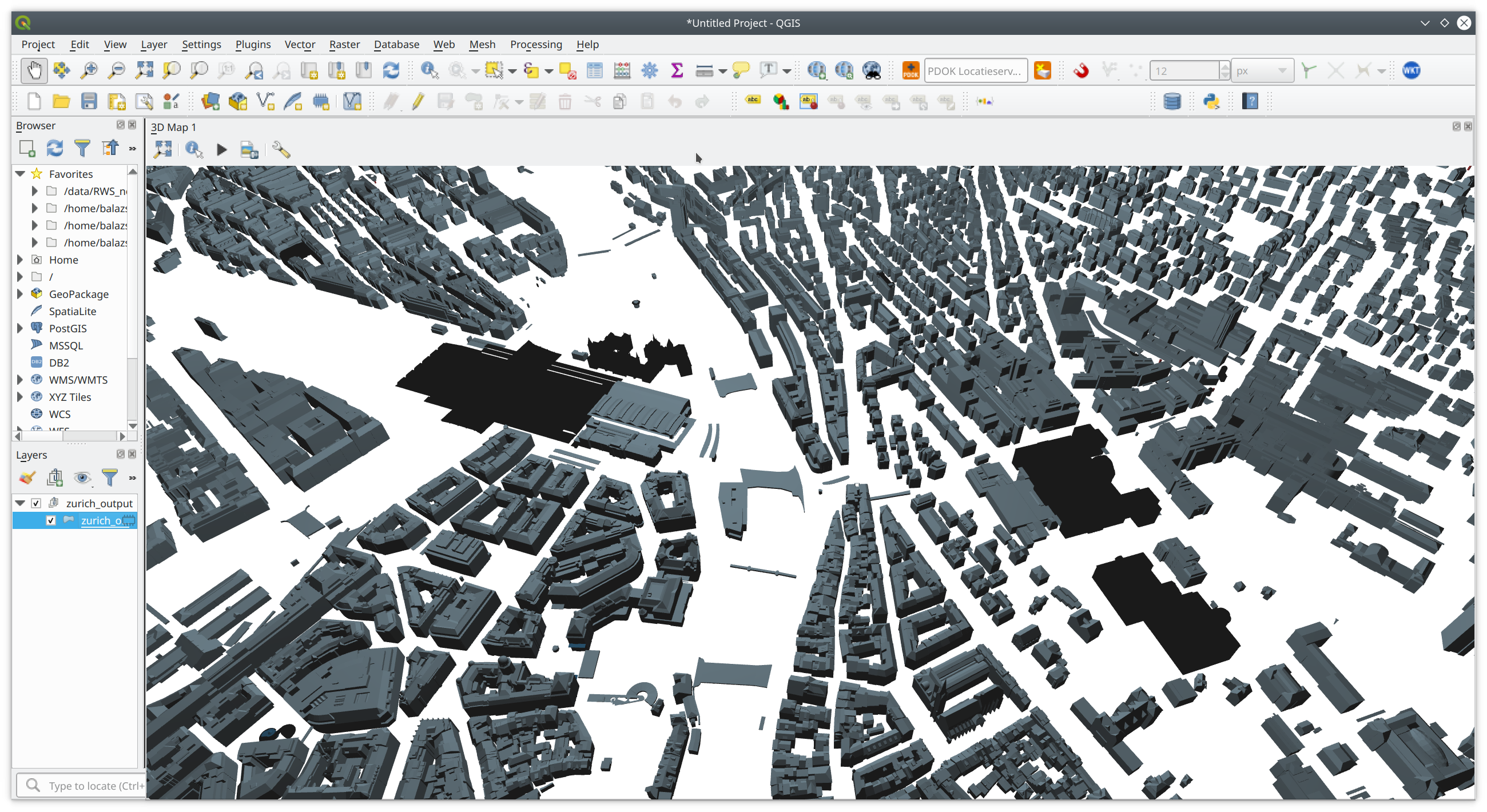
Egyéb alkalmazások¶
Online CityJSON megjelenítő¶

QGIS plugin¶
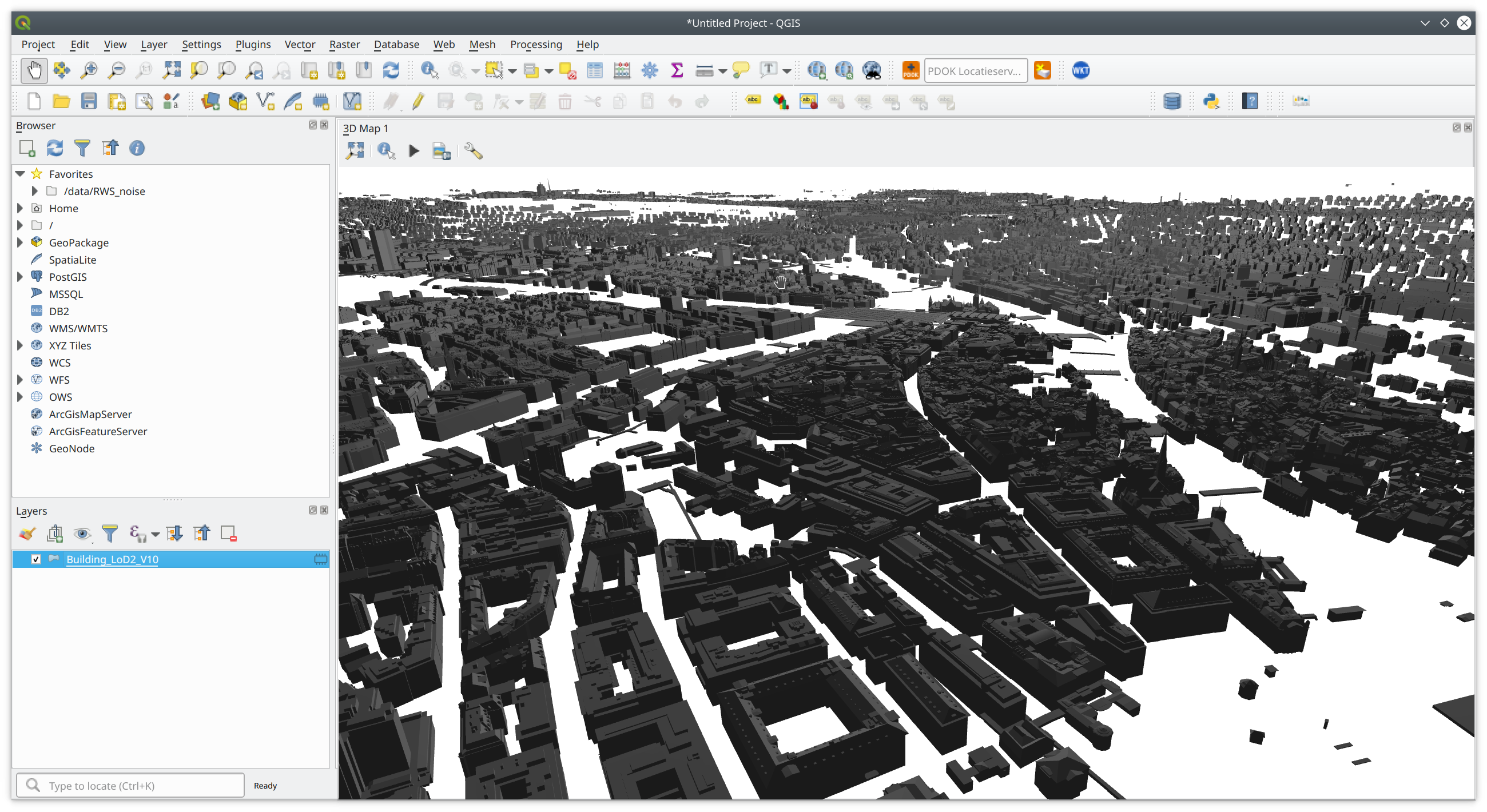
Azul¶
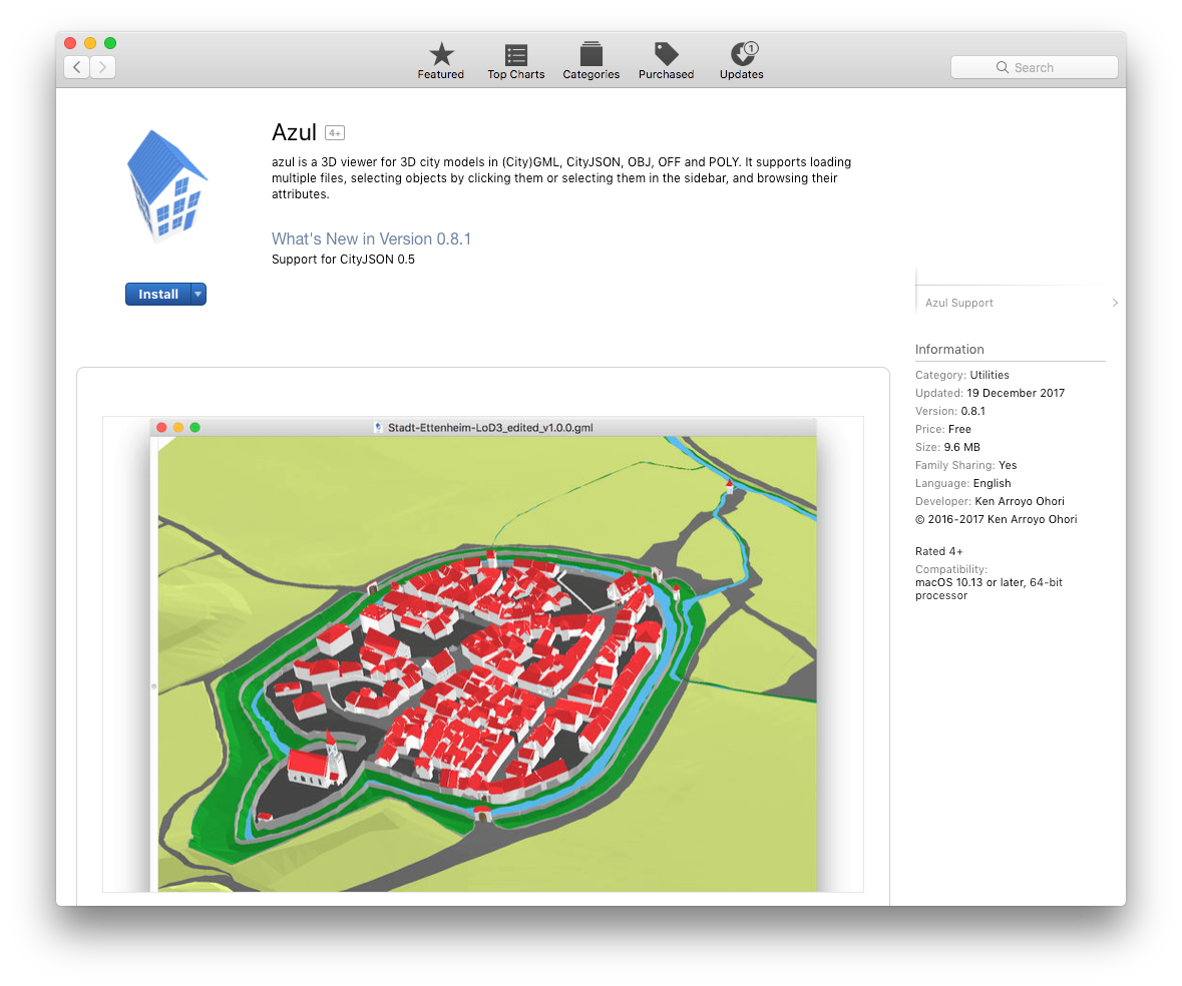
Teljes CityGML <--> CityJSON konvertálás¶
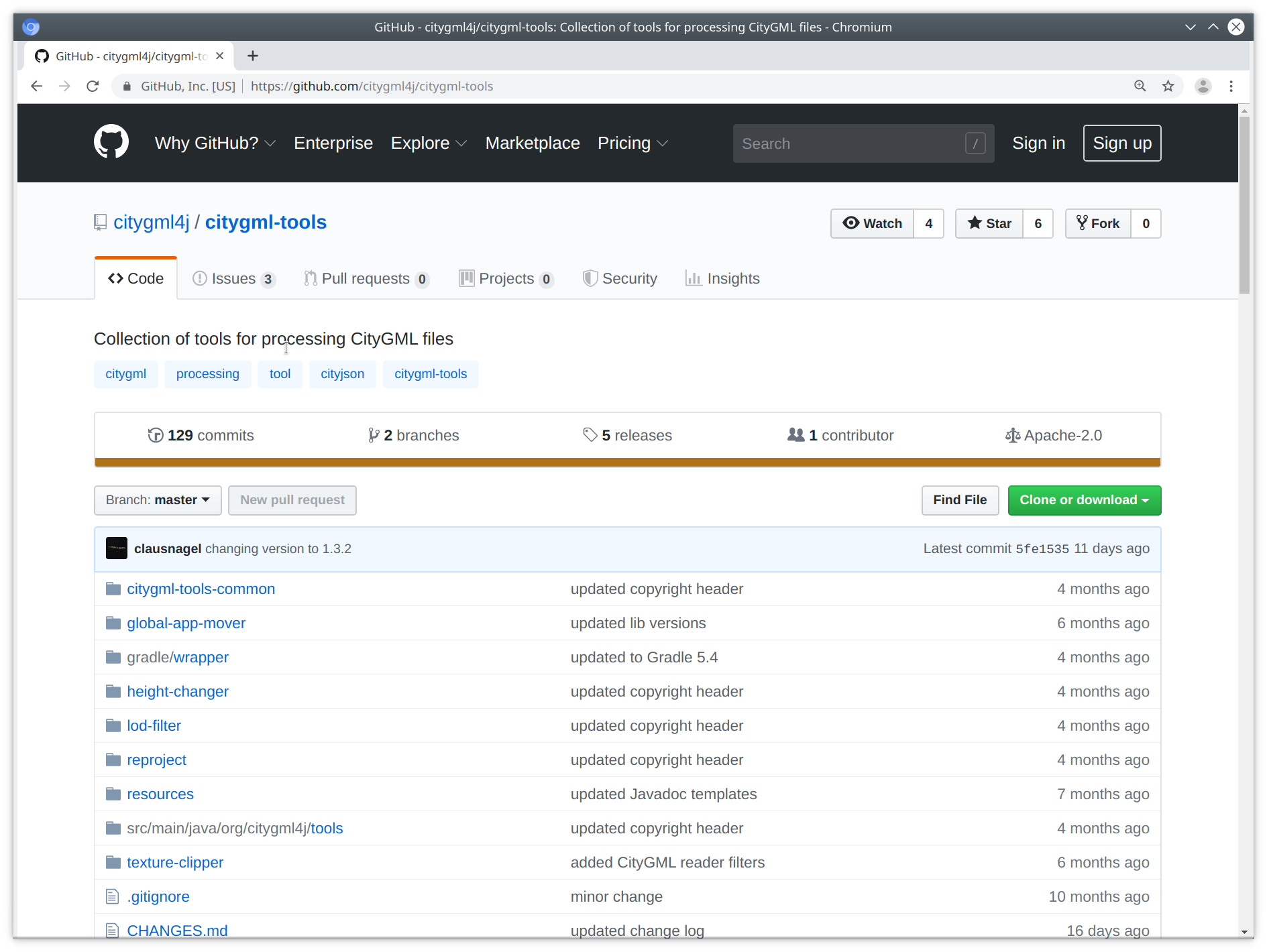
Köszönöm!¶
Dukai Balázs
b.dukai@tudelft.nl
@BalazsDukai
Néhány link¶
Az előadás anyagai: https://github.com/balazsdukai/foss4g2019
QGIS plugin: github.com/tudelft3d/cityjson-qgis-plugin
Azul – CityJSON megjelenítő Mac-en – keresd az AppStore-ban